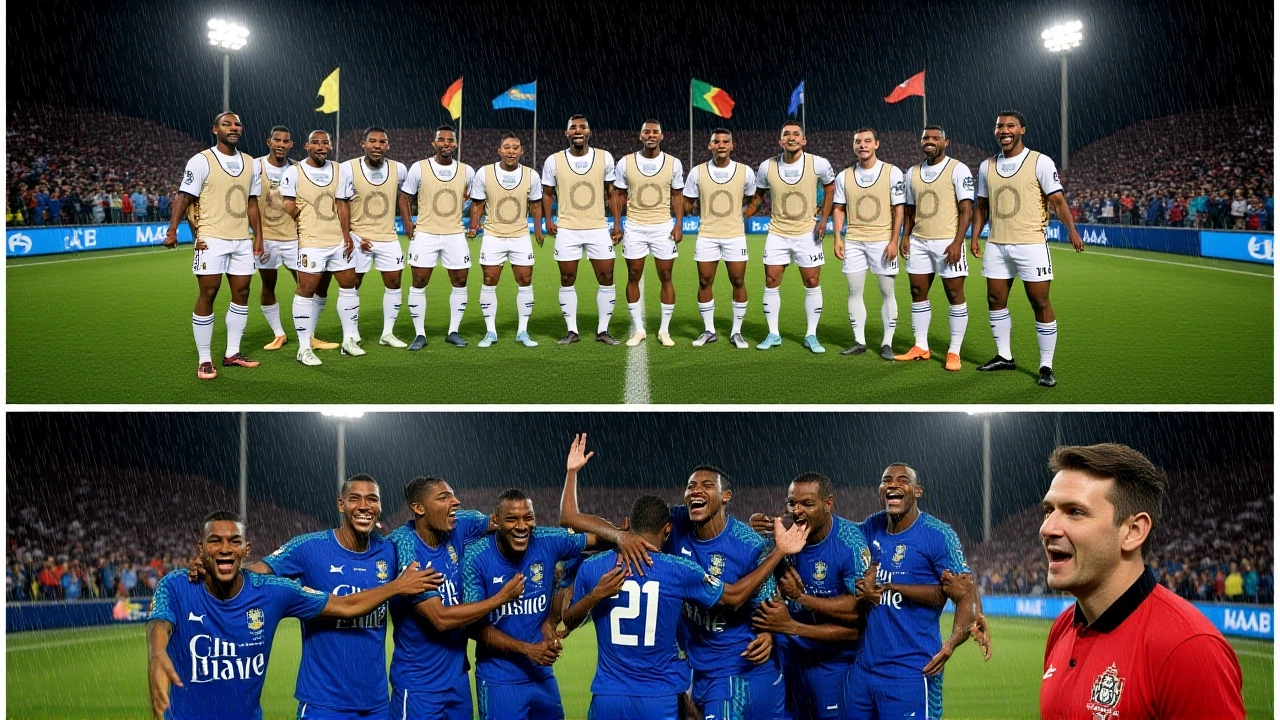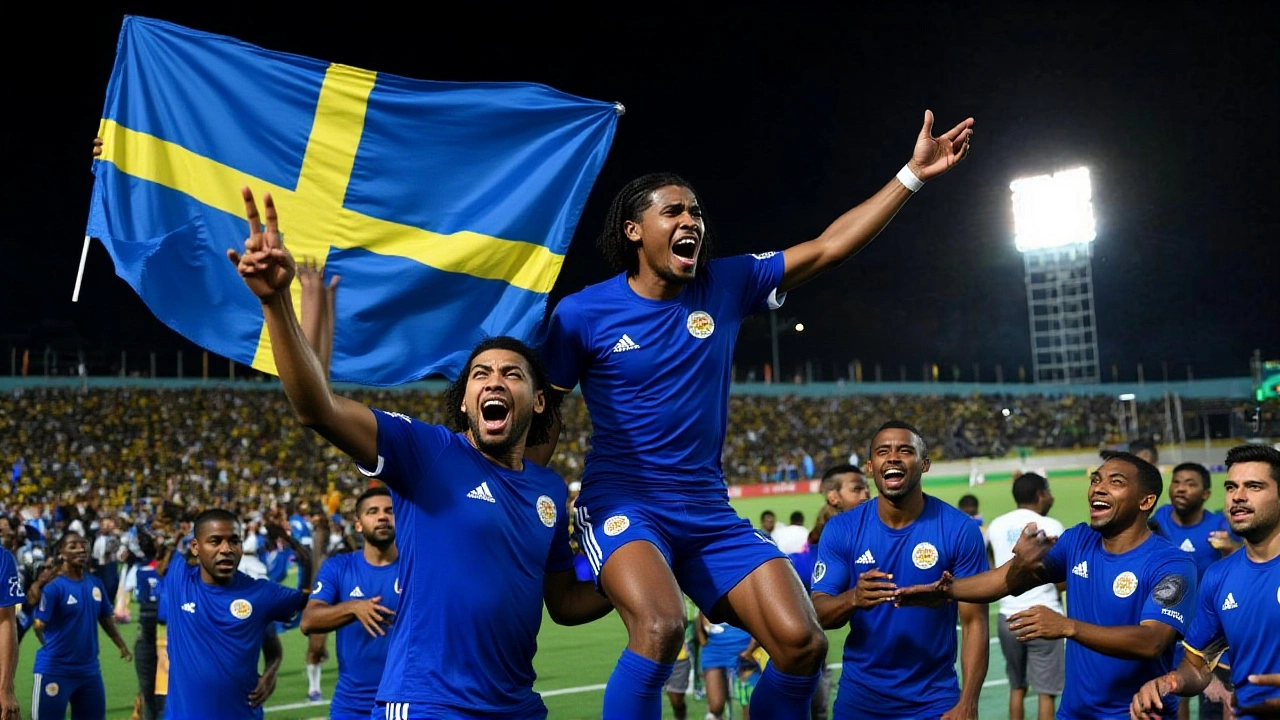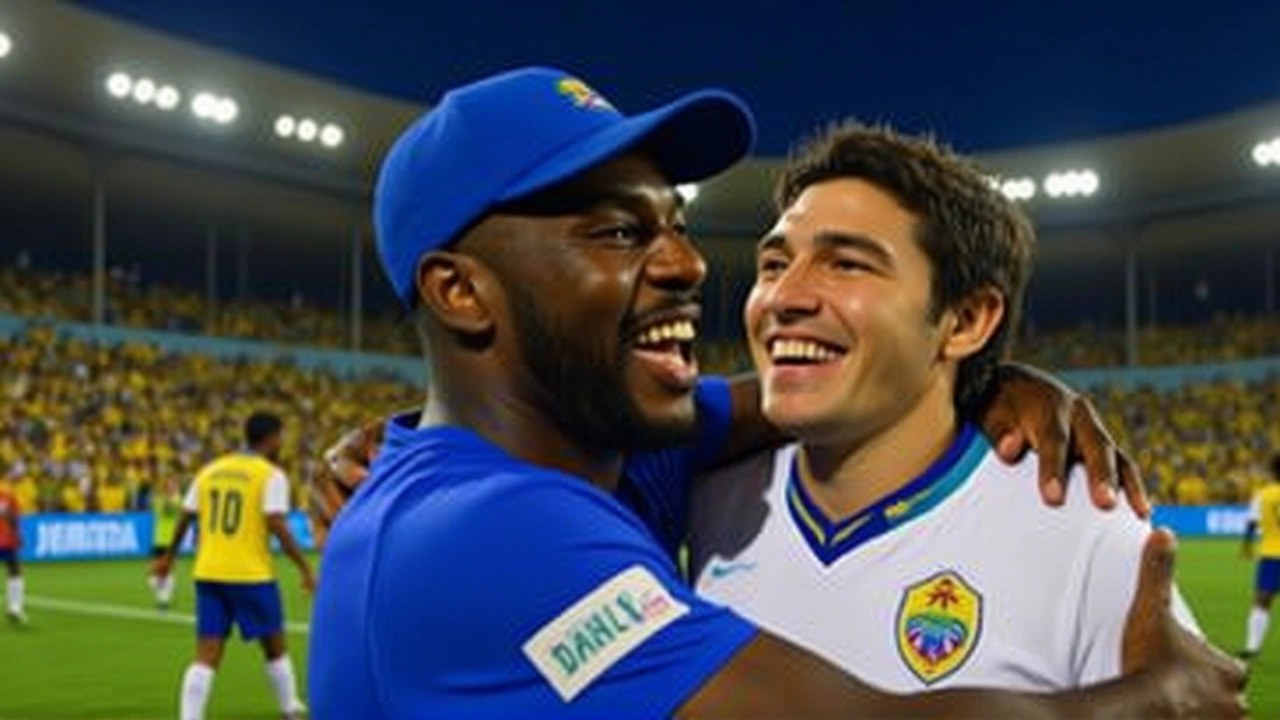When the final whistle blew at the National Stadium in Kingston on November 18, 2025, there were no goals, no celebrations on the pitch — just silence, then a roar. Curacao had just become the smallest nation in history to qualify for the 2026 FIFA Men's World CupUnited States, Canada, and Mexico. Not by scoring a last-minute winner. Not by a miracle penalty. But by holding firm. A 0-0 draw against Jamaica sealed their perfect run in CONCACAF Third Round Qualifying. Twelve points. Six games. Zero losses. And a population of just 165,000.
A Nation That Refused to Lose
Curacao’s journey to the World Cup wasn’t built on star power or massive budgets. It was built on grit. Their squad, packed with players from the Dutch Eredivisie, Belgian Second Division, and even semi-pro leagues, played with a unity that defied their size. Captain Leandro Bacuna anchored the midfield. Goalkeeper Jeremy Antonisse made key stops. And in the final moments, when Jamaica threw everyone forward — including goalkeeper Andre Blake — it was defender Abyspo who cleared the final corner, sending the island into delirium.That final minute, timestamped at 90+10 by ESPN, was the culmination of a campaign where Curacao never lost a single match. Three wins. Three draws. A +10 goal difference. Jamaica, despite finishing second with 11 points, couldn’t break through. Not even with Demarai Gray weaving through defenses or Shamar Nicholson lurking in the box. The defense held. And when John Russell got his second yellow in the 78th minute, the odds tilted further. But Curacao didn’t sit back. They didn’t park the bus. They played with poise. The kind you only see when a whole nation is watching.
The Weight of a Tiny Nation
Iceland qualified for the 2018 World Cup with a population of 370,000. People called it a fairy tale. But Curacao? They’re less than half that size. Imagine a town the size of Santa Fe, New Mexico, or the Isle of Man — and then picture every single person there, from schoolchildren to elders, gathered around TVs, phones, and radios, holding their breath for 97 minutes. That’s what happened in Willemstad. Blue, white, and red flags flew from balconies. Horns blared. A man on a motorbike rode through the streets waving a flag made of bed sheets."We didn’t think this was possible," said 72-year-old Maria van Dijk, watching the match from her porch in Piscadera. "My husband passed away in 2015. He used to say, ‘One day, our boys will make it.’ I didn’t believe him. But tonight… tonight he was right."
Curacao’s football history is littered with near-misses. They’ve qualified for the Caribbean Cup. They’ve beaten bigger teams. But never the World Cup. Until now. The team, nicknamed La Tricolor for their flag’s colors, had never won a World Cup qualifier before this campaign. Now, they’re going to the biggest stage on earth.

What This Means for CONCACAF
This result reshapes the narrative of CONCACAF football. For too long, the region’s World Cup spots were seen as the exclusive domain of the U.S., Mexico, and Canada — with Costa Rica and Jamaica as occasional challengers. But Curacao’s rise proves depth is growing. They didn’t rely on expats or naturalized players. Their squad was 90% homegrown, many from the island’s youth academies funded by modest community donations. Caribbean Football Union president Jack Warner (former FIFA vice president, now retired) called it "the most beautiful upset in regional history."And it’s not just pride. Financially, World Cup qualification means millions. FIFA allocates $10 million in prize money for qualifying teams. Broadcast rights, sponsorships, and tourism spikes could push that to over $25 million — a staggering sum for a country whose GDP is smaller than that of a mid-sized American city.
The Road to 2026
Now, the real challenge begins. Curacao will be drawn into one of the World Cup’s eight groups in December 2025. They’ll face giants: Brazil, Spain, Germany, Argentina — maybe even the U.S. or Mexico. Their training base will likely be in the Netherlands, where many players are based. But don’t expect them to be just happy to be there. Their coach, Wim Koevermans, a former Dutch international, has already said: "We’re not going to Italy to take photos. We’re going to win a game."They’ve already proven they can compete. In their final group match against Trinidad and Tobago, they held them to a 1-1 draw despite being down to 10 men for 20 minutes. That’s not luck. That’s character.

Why This Matters Beyond the Pitch
This isn’t just about football. It’s about identity. For generations, Curacao has been seen as a tourist destination — not a place that produces world-class athletes. Now, their children will grow up knowing they can dream bigger. Schools in Willemstad are already planning World Cup-themed lessons. A documentary is in the works. And the island’s government has pledged to build a new youth academy, funded partly by World Cup revenue."We’re not small anymore," said 14-year-old Kadeem Hooi, who played in the under-17 team last year. "We’re the team that beat the odds. And we’re going to show the world we belong."
Frequently Asked Questions
How did Curacao qualify for the World Cup with only 12 points?
Curacao finished top of Group B in CONCACAF Third Round qualifying with 12 points from three wins and three draws, finishing one point ahead of Jamaica (11 points). Their perfect record — zero losses — and +10 goal difference gave them the edge over Jamaica’s +8. Only the group winner automatically qualifies; second-place teams enter playoffs, which Jamaica missed by a single point.
What’s the population of Curacao compared to other World Cup teams?
With approximately 165,000 residents, Curacao is the smallest nation ever to qualify for the men’s World Cup, surpassing Iceland (370,000) in 2018. For perspective, the next smallest qualifying nation, Wales (3.1 million), is nearly 20 times larger. Even the smallest U.S. state, Rhode Island, has over 1.1 million people.
Who scored Curacao’s goals during qualifying?
Curacao didn’t rely on a single star striker. Their three goals came from three different players: Karoy Anderson (vs. Bermuda), Damion Lowe (vs. Trinidad and Tobago), and Jahshaun Anglin (vs. Jamaica in the first leg). Their strength was balance — a compact defense and efficient counterattacks, not prolific scoring.
What’s the significance of the 0-0 draw being a historic win?
In football, sometimes not losing is the greatest victory. Curacao needed only a draw to qualify, and they faced Jamaica — a team with higher FIFA rankings and more professional players — on the road. Holding firm under pressure, especially after John Russell’s red card, proved their mental toughness. The result wasn’t pretty, but it was perfect.
Will Curacao have a chance to win a game in the 2026 World Cup?
Absolutely. History shows underdogs can win. In 2002, Senegal beat France 1-0 in the opener. In 2018, Iceland held Argentina to a draw. Curacao’s discipline, teamwork, and defensive organization — honed over years of limited resources — make them dangerous. They won’t need to score three goals. Just one, against the right opponent, could change everything.
How is Curacao preparing for the World Cup?
The Curacao Football Association has partnered with Dutch clubs to establish a training camp in the Netherlands, where most players are based. They’ve scheduled friendly matches against Belgium, Sweden, and Panama. A new youth academy is under construction in Willemstad, funded by FIFA development grants and local donations. The goal: make this not a one-time miracle, but the start of a legacy.
